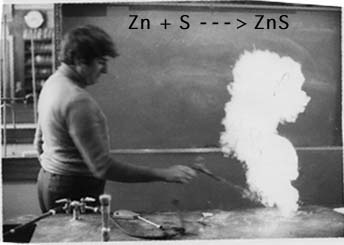 Photo: Chester Carlson with a machine no one wanted until the 1960s
Photo: Chester Carlson with a machine no one wanted until the 1960sChester Floyd Carlson (February 8, 1906 – September 19, 1968) was an American physicist, inventor, and patent attorney born in Seattle, Washington.
Carlson invented Xerography
Carlson was originally a patent attorney, a part-time researcher and an inventor. He is best known for having invented the process of electrophotography, which produced a dry copy rather than a wet copy, as was produced by the mimeograph process. Carlson's process was subsequently renamed to xerography, a term that literally means "dry copy."
Necessity is the Mother of Invention
His job at the patent office in New York required him to make a large number of copies of important papers. Carlson, was arthritic and found using mimeograph machines, Verifax, and carbon paper copying a painful and tedious process. Being an inventor, he worked to invent a solution to his physically difficult job.
His Kitchen was his Lab
It took 15 years of experiments with photoconductivity to come up with a . He used his kitchen for his "electrophotography" experiments, and, in 1938, he applied for a patent for the process.
 First Photocopier Ingredients: Zinc and Sulfur
First Photocopier Ingredients: Zinc and SulfurHe made the first photocopy using a zinc plate covered with sulfur. The words "10-22-38 Astoria" were written on a microscope slide, which was placed on top of more sulfur and under a bright light. After the slide was removed, a mirror image of the words remained.
No market for Copiers before the 1960s
Carlson tried to sell his invention to some companies, but failed because the process was still underdeveloped. At the time, multiple copies were most commonly made at the point of document origination, using carbon paper or manual duplicating machines, and people did not see the need for an electronic machine. Between 1939 and 1944, Carlson was turned down by over 20 companies, including IBM and General Electric—neither of which believed there was a significant market for copiers.
Xerox finally finds Copier Market
Xerox was founded in 1906 in Rochester, New York as "The Haloid Company", and originally manufactured photographic paper and equipment. The company subsequently changed its name to "Haloid Xerox" in 1958 and then simply "Xerox" in 1961. Xerox came to prominence in 1959 with the introduction of the Xerox 914, the first plain paper photocopier using the process of xerography developed by Chester Carlson.
 National Inventors Hall of Fame
National Inventors Hall of FameChester Carlson's invention was the first truly simple, push-button, plain-paper copier, and was so successful that it sold in only six months what the company had projected it would sell in the product's entire lifetime. In 1981 Carlson was inducted into the National Inventors Hall of Fame.
 Contex is one of the leaders in the development of wide format imaging and scanning solutions around the world and it has just unveiled two new multi-function solutions in the SD4430 MFP and the HD3650 MFP. These two devices are designed to give customers who want to optimize their on-demand copying, scanning, and printing solution and need an affordable yet versatile piece of equipment.
Contex is one of the leaders in the development of wide format imaging and scanning solutions around the world and it has just unveiled two new multi-function solutions in the SD4430 MFP and the HD3650 MFP. These two devices are designed to give customers who want to optimize their on-demand copying, scanning, and printing solution and need an affordable yet versatile piece of equipment.